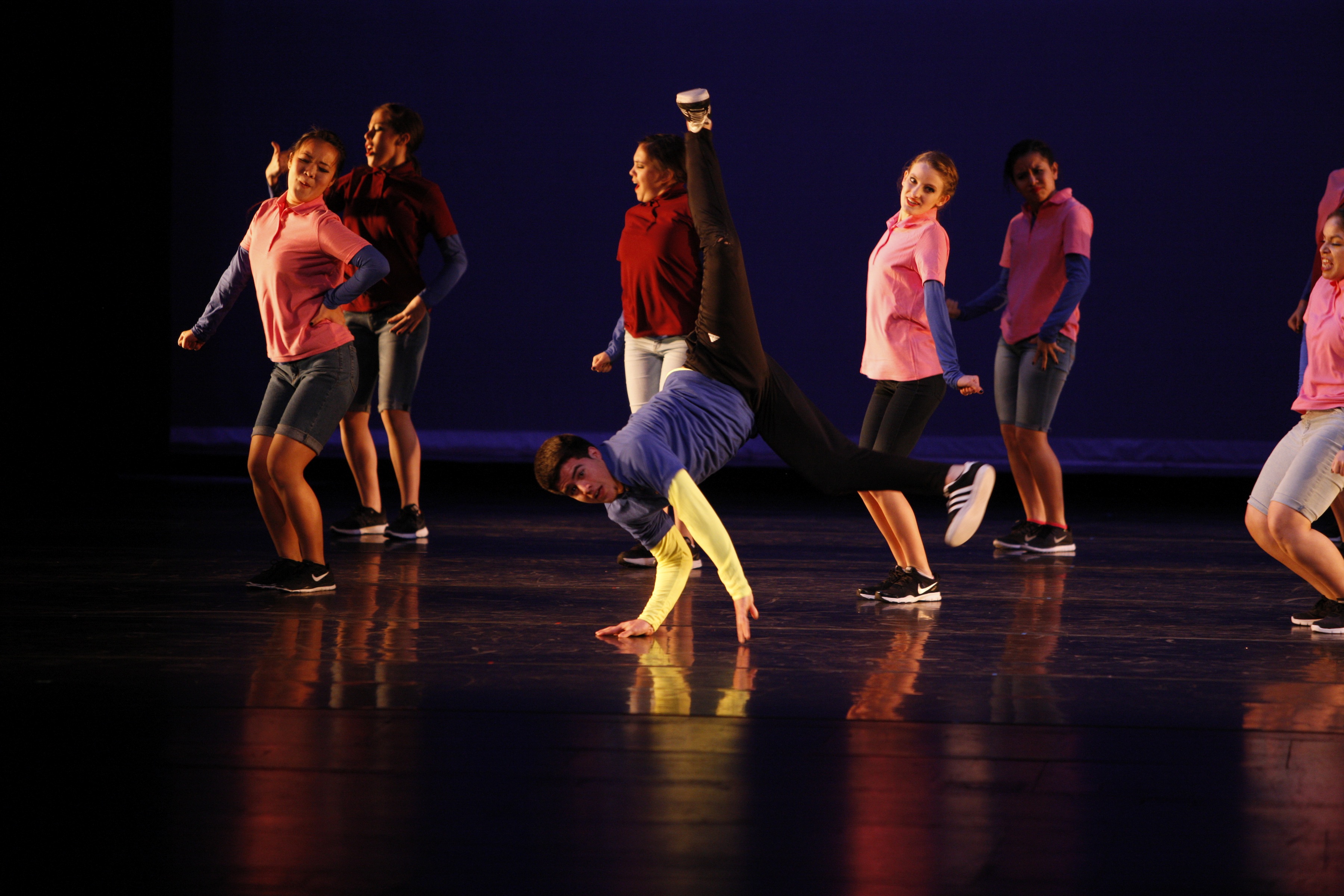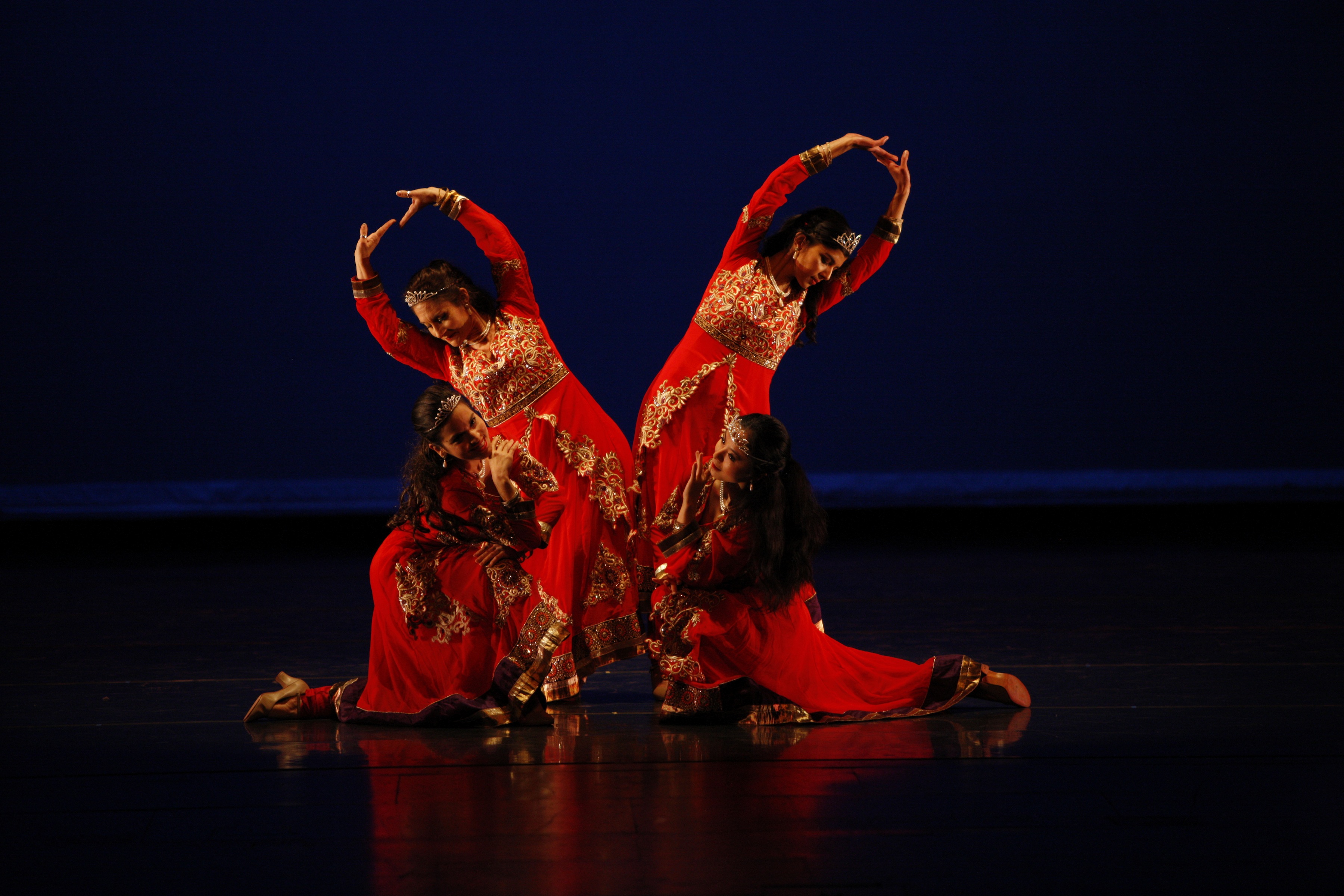Of Love and Hip-Hop: Dance Houston’s 12th Annual Festival
Photos by James Wiseman, Reefpix.org
The annual Dance Houston festival has been a successful platform for emerging dance companies and new choreographers for the past decade. Sonkiss’d Dance Theater made one of its first public appearances at last year’s festival, and this season’s larger company followed through on that promise of good things to come. The company’s Supreme Being offers a strong concluding image to a dance that has been set to “Beautiful Things,” by Gungar, a Christian rock song about the maker and the wonder of his primary creations: us.
There is a moment when a clan of young dancers in casual wear is moving on stage, each individual with his or her own style of expression, and in the center is an artist drawing a figure on large blank slate of paper. You hardly notice the efforts of the artist until the dancers draw back into a single line, and the artist steps aside to reveal a smiling face. Even if one is not of the Christian persuasion and is not readily sold to the characteristics of the Divine described in the dance’s first half, the idea that each person is a beautiful thing, as conveyed through hip-hop and contemporary dance, packs an emotional punch.
Dance Houston’s 12th Annual Festival held on February 8, 2014 at the Wortham Theater Center showcased eighteen Houston companies representing just about every style of dance imaginable. Sonkiss’d Dance Theatre provided the evening’s best piece of work, but the program featured strong entries from several dance forms.
If there’s one thing about the annual Dance Houston Festival that deserves special commendation is its inclusion of world dance, and lots of it. With that said, the quantity of these entries might need to be pruned in favor of quality. One of the highlights in this group was Mnemosyne’s Roya (Persian Dreams), choreographed by Artistic Director Kristina Koutsoudas. Pretty, elegant, and lyrical in its use of modern vocabulary to really move the quartet across the stage, the dance did not devolve into a spectacle of sparkly exoticism that one might expect from a theatrical presentation of dance of the Mid East. Evoking the ethereal quality of the peris, or angels, of Persian mythology, Roya uses as its primary base the beautiful steps of Persian folkdance, including those lovely cascading hands that look like doves in flight.
Roya is not folk dance in its original form, but it maintains the cultural integrity of the vocabulary it represents. I’m not sure what vocabulary is meant to be represented by Dance from the Heart’s El Moro. Without looking at the program notes, which I try not to do, there appears to be a conflict between two matriarchal figures dressed in gypsy garb. The group of women is divided between them, and it appears that whoever wins this battle of the feminine will decide the fate of the entire group. This sounds like an interesting dramatic setup, but the choreography itself does not serve the vague narrative. The drama is illustrated by gestures and mime-like movements, and the dancers never stray from their simplistic formation. If these are gypsies, what in the dance itself tells us so?
I also wish Kucheza Ngoma Dance Company would have presented a more cohesive entry than Sankofa. In addition to West African dance, Kucheza Ngoma also specializes in Jamaican dancehall, which comprised the first half their performance. The second half is where things became a little messy. In an attempt to show that dancehall is in direct lineage of West African movement, a drummer entered the stage and played the sinte rhythm over the contemporary music track while the dancers performed the traditional steps. Unfortunately the mash-up was a bit of auditory overload and the live drumming on top of the recording seemed to jar the less experienced performers. Even though sinte is a celebration dance that is common stock in the West African dance repertory, it would have been nice to see a straight version of it from what is usually quite a handsome company.
In contrast to previous year’s festivals, Dance Houston compiled a roster of eighteen companies with next to none of the city’s professional heavy hitters. Revolve Dance Company performed Bloodstream, a pretty, if muted, exploration of the power of the individual in connection with the strength of the community. But the majority of presenting organizations were youth ensembles or studio-based companies, which kept the tone light and springy with little time for contemplation. With that said, the festival showed that student work can be just as riveting as its professional counterpart.
Case in point: Inertia Dance Company’s Linear Function. This may be a high school hip-hop crew, but they command the stage like professionals. And dance like it, too. Co-choreographers Joel Rivera and Sharon Roberts’ choreography is sharp and clear, with complex formations that underscore the group dynamics and humorous antics between boys and girls. There is a lot to admire in the bold staging, as well as the unfazed execution by the dozens of big-smiled dancers. If Dance Houston wants to present the future of dance in such large quantity, they might want to consider building that into their mission. And invite Inertia back again and again.
Adam Castañeda is a Houston-based dance writer. He also performs with FrenetiCore, Lipan Urban African Performing Arts Collective, and USDC2.






Recent Comments